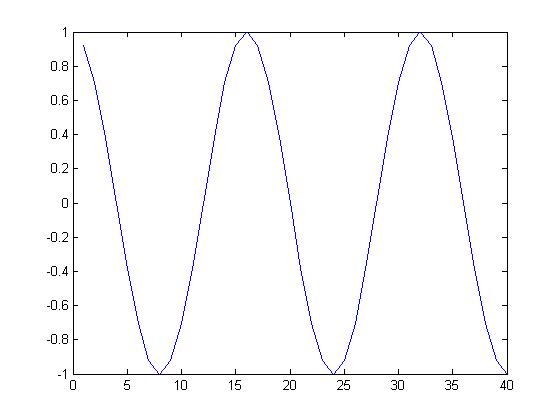(New page: I choose y(t)=cos(t) as my continous signal. There is no doubt that y(t)=cos(t) is periodic because cos(t + T) = cos(t) where its fundamental period is 2*π First I sample the signal y(t...) |
|||
| Line 5: | Line 5: | ||
---- | ---- | ||
| − | [[Image: | + | [[Image:periodic_ECE301Fall2008mboutin.jpg]] |
Revision as of 18:56, 11 September 2008
I choose y(t)=cos(t) as my continous signal. There is no doubt that y(t)=cos(t) is periodic because cos(t + T) = cos(t) where its fundamental period is 2*π First I sample the signal y(t)=cos(t) at 1000 Hz and so we get the following discrete signal which is periodic


